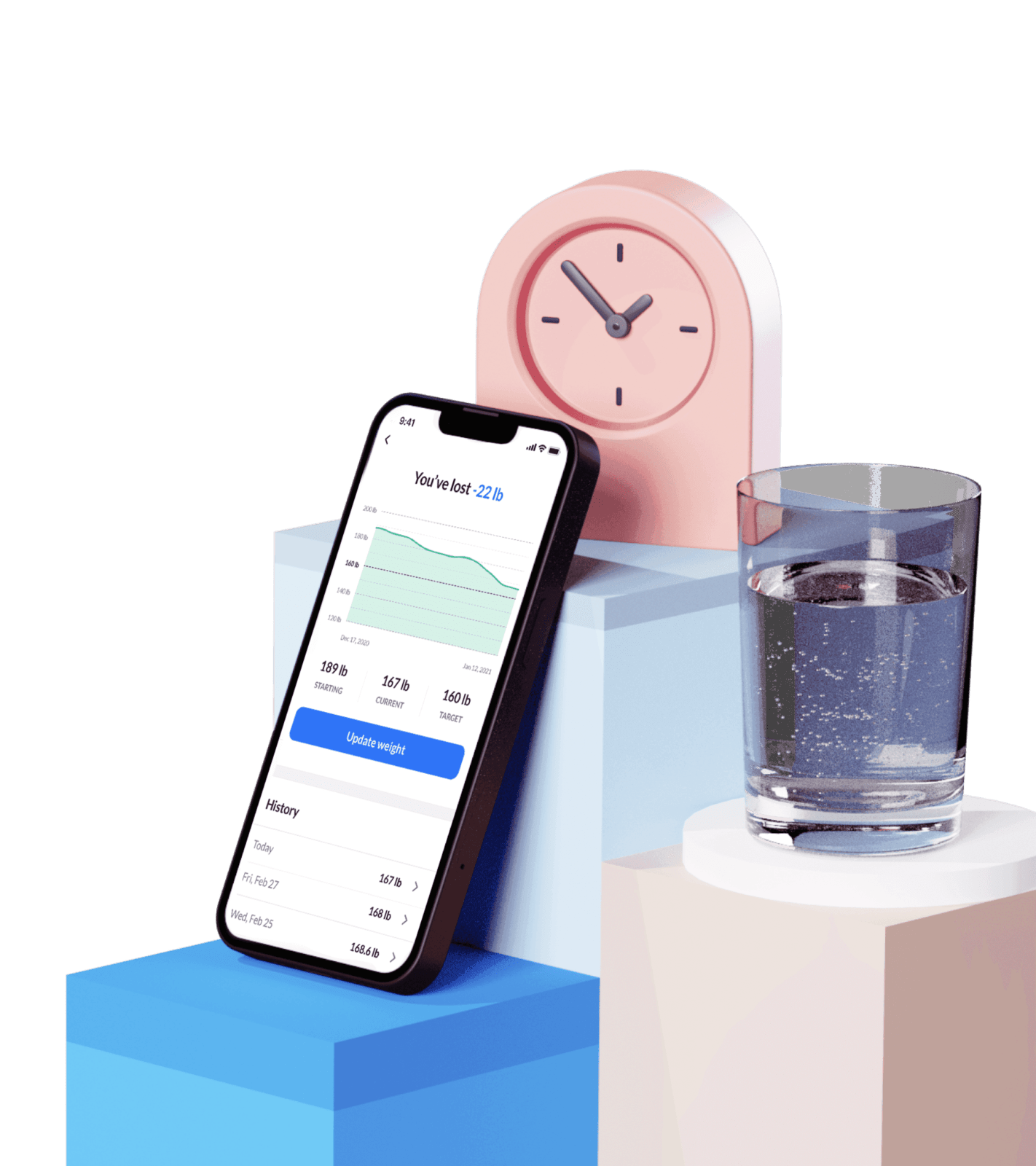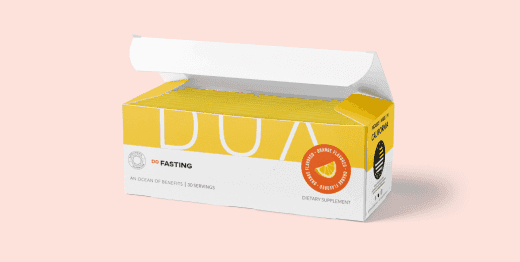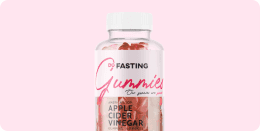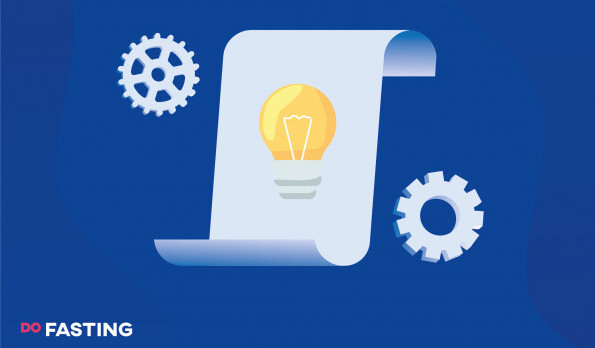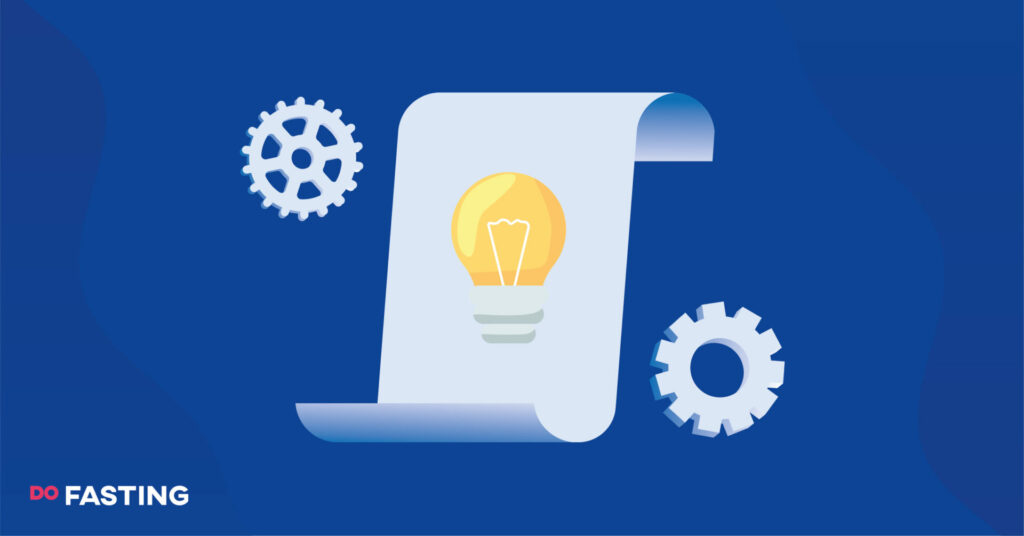Contents
What Is the HMR Diet, and How Does It Work?
The Health Management Resources program, or the HMR program, is a zero-effort weight-reduction plan consisting of pre-packaged meals, beverages, and snacks. It was created by a group of healthcare professionals led by Dr. Lawrence Stifler.
HMR’s primary goal is to help you reach your weight loss goals by providing you with pre-packaged, low-calorie meals that help induce a calorie deficit. But this is not the only thing that enables you to lose weight in HMR.
Regular exercise is a big part of this program. Aside from the fact that exercise has been shown to improve your overall health and mood significantly, it also contributes to your efforts to get in shape.
Considering its background, it’s no wonder the HMR program is backed by research. Although limited, several studies have shown that meal replacement programs may increase weight loss.
With HMR, you don’t have to worry about what you will eat next or how many calories a specific meal consists of. In addition, HMR provides 24/7 support with its mobile app, so you can stay accountable by keeping track of your journey—just log your daily calorie intake, make sure you get enough physical activity every day, and update your weight log on your phone.
Interested? Let’s learn how to get started on the HMR diet.
Take a
1-minute quiz
and discover how much weight you can lose with DoFasting!
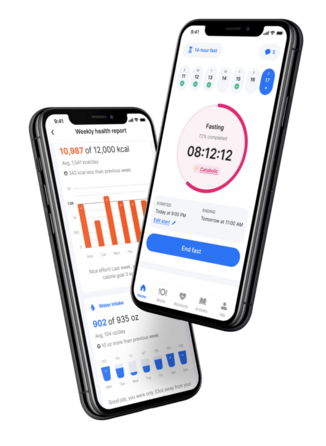
How To Follow the HMR Diet
There are two phases to the HMR program—weight loss and weight maintenance. Phase 1 is more of a short-term plan, while phase 2 should, ideally, go on for several months.
Phase 1: Weight loss
As the name suggests, the goal of phase 1 is to lose weight fast. This means that this phase is more restrictive than phase 2. Here you will be eating 3 HMR shakes, 2 HMR entrees, and 5 servings of fruits or vegetables of your choice. HMR refers to this eating plan as 3+2+5. No more counting calories or worrying about what you have to eat—the HMR program has got you covered.
HMR heavily discourages starving yourself while trying to lose weight. If you’re still hungry after eating, you can eat something else as long as it’s included in the 3+2+5 eating plan. The constant feeling of fullness should help reduce food cravings and prevent overeating.
In addition to following an eating plan, you will have to burn at least 2000 calories every week through exercise. This doesn’t necessarily mean that you have to hit the gym daily—you can opt for morning/evening walks, yoga, or dancing. The goal is to find something you enjoy, so exercise doesn’t become a chore.
Phase 1 lasts 8 weeks or more, depending on your current body weight and goals.
Phase 2: Weight maintenance
HMR stresses the importance of building healthy habits to maintain a healthy weight. Most diets fail because short-term solutions don’t teach you how to lead a healthy lifestyle—a core pillar of having a healthy weight.
The HMR program, on the other hand, has made it one of its goals to help you learn how to take care of your body and weight through healthy eating and habits.
That is precisely what phase 2 is all about. At the beginning of this stage, you will slowly start reintroducing regular food into your diet and minimize your reliance on pre-packaged meals.
As you enter phase 2, you’ll focus on reintroducing lean protein and whole grains. This means that instead of having an HMR entree, you could opt for a lean protein with fruits or vegetables on the side. When preparing your meals, you’ll have to make sure to steer clear of sources of fat such as oil and butter.
In this phase, you are still highly encouraged to eat 5 servings of fruits or vegetables per day. The requirements for regular exercise stay the same—burn 2000 calories a week through physical activity.
HMR recommends following phase 2 for at least a few months so you have enough time to build and stick to your new habits.
What Foods Will You Eat on the HMR Diet
While the HMR program tends to be restrictive in the first stage, you can make your own choices once you’ve achieved your goals.
During phase 1, you will mostly eat pre-packaged food, including shakes and entrees. In addition, you’re allowed to have fruits and vegetables on the side or as a healthy snack.
Phase 2, on the other hand, is less restrictive. You will still be eating pre-packaged meals, but they will become less of a staple and more of a supporting food while you figure out how to create a well-balanced diet for yourself.
Here are the foods you can eat on the HMR program.
HMR shakes
Shakes are the staple of the HMR program. They can be used as a meal replacement, breakfast, or snack if you’re still hungry after eating.
These shakes are pretty easy to prepare—all you have to do is mix water and a serving of your chosen shake in a blender.
You can also use these shakes as a base for smoothies—just add some frozen fruits and blend them together with your shake. Decorate it with fruits of your choice, and you will have a perfect morning smoothie.
Let’s take a look at one of HMR’s most popular shakes: the 120 Vanilla Shake Mix. A serving of the 120 Vanilla Shake Mix holds 120 calories and contains:
- Total Fat: 1.5g
- Cholesterol: 15mg
- Sodium: 190mg
- Total Carbohydrate: 15g
- Dietary Fiber: 0g
- Total Sugars: 14g
- Added Sugars: 2g
- Protein: 12g
These shakes are also enriched with various vitamins and minerals. You can find the complete ingredient list on the HMR website.
HMR entrees
Easy to prepare and under 300 calories, HMR entrees will be your main meal of the day throughout the entire period.
HMR entrees are pre-packaged and pre-portioned meals. They require no time in the kitchen—just pop one into a microwave, and you’re good to go.
Of course, you don’t have to stick to the plain HMR entree alone. In fact, you’re encouraged to toss in your favorite vegetables with every HMR entree to promote a habit of eating vegetables with almost every meal.
There are many different HMR entrees to choose from, starting with creamy Mac and Cheese and ending with a delicious Vegetable Stew. All HMR entrees are under 300 calories, so you will eat fewer calories than you burn, which should translate to weight loss.
For example, Beef Stroganoff, one of the HMR entrees, is a filling meal based on lean beef, egg noodles, and mushrooms on the side.
A single serving of Beef Stroganoff holds 250 calories and contains the following:
- Total Fat: 8g
- Cholesterol: 70mg
- Sodium: 600mg
- Total Carbohydrate: 22g
- Dietary Fiber: 1g
- Total Sugars: 4g
- Added Sugars: 1g
- Protein: 19g
You can find the complete ingredient list of each HMR entree on the HMR website.
Fruits and vegetables
HMR stresses the importance of eating fruits and vegetables on a daily basis. It’s one of the reasons why they are part of the restrictive weight loss phase. HMR recommends having five servings of fruits and veggies every single day.
Here are some examples you can incorporate into your diet:
- Apples
- Bananas
- Grapes
- Avocado
- Green beans
- Spinach
However, no fruit or vegetable is truly off-limits—as long as it’s prepared without extra fat.
Lean proteins
Protein is an essential part of a well-balanced diet. It can be reintroduced into your diet in the weight management phase. HMR recommends choosing lean protein as it has a lower calorie count and may help with weight management.
Some good sources of lean protein include:
- Skinless chicken
- Salmon
- Tuna
- Tofu
- Beans
- Eggs
Whole grains
Whole grains, unlike refined grains, contain all parts of the grain, which are rich in vitamins, minerals, and phytochemicals. You can reintroduce whole grain foods in the second phase of the diet.
Whole foods you can add to your diet include:
- Whole grain bread
- Whole grain pasta
- Oatmeal
- Quinoa
Foods To Avoid in the HMR Diet
During phase 1, you’re not allowed to stray from the diet. This means all you can eat are pre-packaged meals, shakes, fruits and vegetables, and absolutely nothing else.
Phase 2, on the other hand, gives a lot more freedom. At this stage, ensuring you don’t fall back on unhealthy eating habits is crucial. Hence, you should avoid high-calorie and high-sugar foods, including:
- Fast food such as french fries, pizza, and burgers
- Junk food such as chips, cookies, and sweets
- Sugary beverages such as fruit juices, sodas, and alcohol
Eating your favorite chips or having a can of soda occasionally won’t hurt you, but it’s essential to ensure that these foods don’t become a regular part of your daily diet.
Take a
1-minute quiz
and discover how much weight you can lose with DoFasting!

Sample Day on the HMR Diet
Let’s take a look at sample meal plans and exercises you can do while on the HMR program.
Phase 1
A sample day in phase 1 could look like this:
- Breakfast: 120 Chocolate Shake Mix blended with a cup of frozen berries
- Snack: a cup of fresh strawberries
- Lunch: Rotini Chicken Alfredo entree with 2 cups of zucchini and broccoli
- Snack: 70 Plus Vanilla Shake with banana
- Dinner: Chicken with Barbecue Sauce entree and 2 cups of cucumber and tomato
- Snack: 120 Chocolate Shake Mix with hot water
Essentially, you just have to follow the 3+2+5 rule—3 shakes, 2 entrees, and 5 cups of fruits or vegetables.
Don’t forget to incorporate some physical activity into your daily routine. Your goal is to burn 2000 calories a week, which doesn’t really require intense training. Some examples include:
- Morning stretches to start your day
- 20-minute morning walk
- Pilates
- Dance class
- Yoga and meditation before sleep
Doing the same daily physical activities to build healthy habits may be beneficial. For example, you can make it part of your daily morning routine to take a short walk before starting work.
You can also incorporate medium-to-high-intensity workouts a few times during the week, such as going to the gym or joining a cycling class. But remember, if you hate going to the gym—don’t force yourself. Instead, find something you enjoy doing.
Phase 2
Dropping weight is difficult, but maintaining it is no walk in the park either. While phase 2 is less restrictive, it requires conscious effort to make healthy food choices.
A sample meal plan in phase 2 could look like this:
- Breakfast: Multigrain Hot Cereal with cinnamon and apple slices
- Snack: A cup of cherries
- Lunch: Home-made chicken burrito bowl
- Snack: 120 Vanilla Shake blended with coffee and vanilla extract
- Dinner: Mushroom Risotto entree with a cup of beans and tomatoes on the side
- Snack: An orange
Your goal is to reduce your reliance on pre-packaged meals and start making your own healthy food choices.
What about exercise? Ideally, by the time you reach this stage, you’ll already have found physical activities you enjoy. Training should remain a big part of your lifestyle, as it’s one of the keys to healthy weight management.
The Cost of the HMR Diet
One of the most significant disadvantages of the HMR program is that it’s expensive. Low-calorie meals that promote weight loss cost around 110$ a week, making it a whopping 440$ per month. This doesn’t include your grocery trips for fruits and veggies.
You may also buy HMR entrees, shakes, and snacks individually at their express shop. For example, a single serving of Pasta Fagioli costs 4.25$, while 12 servings of the 120 Vanilla shake cost 27.95$.
In addition, HMR offers the following:
- Initial Medical Screening – 60$
- Lifestyle classes – 25$/week
Considering its price, the HMR program may be challenging to follow for an extended period of time.
How Does the HMR Diet Work for Weight Loss?
The promise behind HMR is rapid weight loss induced by pre-packaged low-calorie meals.
Studies have shown that meal replacement programs, such as the HMR program, are highly effective for short-term weight loss. However, it remains to be seen how successful this program will be in the long term.
On average, people drop around 23 pounds in 12 weeks of the HMR diet, which is about 2 pounds lost every week. According to CDC, losing 1-2 pounds per week is considered safe.
However, this number can be different for you, as the amount of weight you can lose through dieting depends on several factors, like your current weight and lifestyle.
It’s important to note that any diet that promises quick weight loss is one you should be wary of. Weight loss is a marathon, not a sprint. The slower you lose those unwanted pounds, the more likely you are to keep them off in the long run.
Other Possible Benefits of the HMR Diet
One of the main ideas of the HMR program is to help you form new habits that, in the long run, promote a healthy lifestyle. Some of them include the following:
- Eating fruits and vegetables
- Exercising regularly
In addition, some studies have shown that meal replacement programs can lower blood pressure and improve HDL cholesterol levels, but this may also be just a bonus of dropping weight.
Risks and Drawbacks To Consider on the HMR Diet
One of the main concerns of the HMR program is that it’s highly restrictive, which can make it challenging to stick to. Spending your days eating pre-packaged meals can also be isolating, as you won’t be able to join your friends and family for dinner or social events.
Another downside of HMR food is that it’s packed with additives. While most of them do not pose a risk to human health, food additives are not a better alternative to fresh food.
Moreover, there are only so many HMR entrees and shakes, which are bound to get repetitive fast—making it even more difficult to stay on track.
HMR is not a one-size-fits-all program. Weight loss is personal. It’s always best to consult a healthcare professional who can help you create a weight loss plan for your needs.
Is the HMR Diet Safe To Follow?
Yes, the HMR diet is safe to follow. While the research is limited, meal replacement programs, which are the core concept of the HMR diet, have been studied and approved as safe and effective weight loss methods.
But did you know that you can lose excess pounds without dieting at all? Intermittent fasting is a time-restricted eating pattern that helps you lose weight without restricting your eating.
You can take control of your body with DoFasting—a mobile app designed to help you reap the benefits of intermittent fasting. Choose one of the seven fasting types, log your calorie intake, set goals, and keep yourself accountable in your new journey.
Take a
1-minute quiz
and discover how much weight you can lose with DoFasting!

The HMR Diet: Key Takeaways
The HMR diet claims to help you drop weight quickly—a promise that’s been echoed by many fad diets. It may help you shed unwanted pounds by reducing your daily calorie intake with the help of pre-packaged meals and beverages. However, it’s a highly restrictive program and may be challenging to follow in the long term.
In most cases, a well-balanced diet and regular exercise are enough to help you lose weight and keep it off over a more extended period.
See how DoFasting will improve your life
Find out what works for you with this 60-sec quiz approved by our experts and get your personal revolutionary fasting assistant.
Start the Quiz